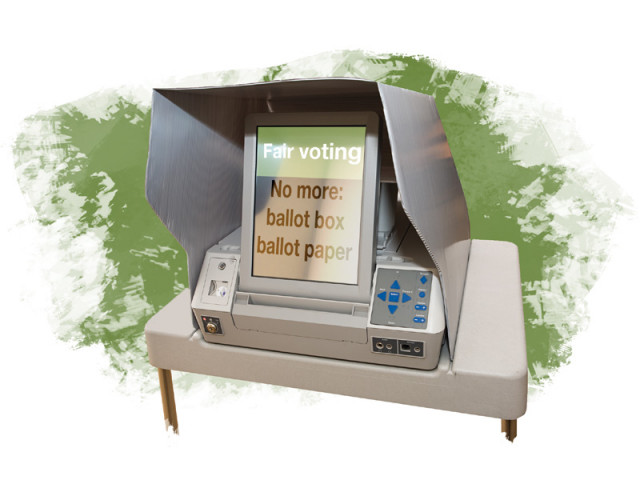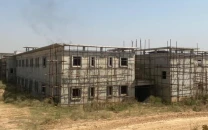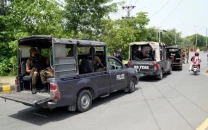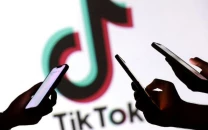Innovation: Elections without voters lists or ballots
Inventor promises the device will counter bogus voting; seeks government’s approval.

IT engineer Asif Nawaz has found a novel way for the Election Commission of Pakistan (ECP) to ensure transparency in the voting process and do away with the burdensome task of voter lists verification: he has created a programmable Satellite Voting Device (SVD).
The device – which will cost between $3,500 and $5,000 – will not only put an end to ‘bogus’ voting, it will also help the government save on the huge expenses incurred on resources for the election process, says Nawaz.
The inventor is a graduate of the Al-Khair University, and the head of Business, Software House and IT Services of Business-20 – an Islamabad based private company. He has worked previously as a software engineer for Sanai Rugs Inc; an American company based out of Florida.
Nawaz says that the SVD is practical and flawless.
“Such machines are common in small offices and are used for ID verification of employees,” Nawaz says. “This is a highly intelligent machine,” he adds, “and the task it has to perform is not complicated – making it very practical.”
Explaining the functioning of the SVD, Nawaz says that voters will apply their thumb to the impression reader. “You have already cast your vote” will appear on the screen in case the person has already voted. This is the safety mechanism that makes fake or bogus voting impossible. If the voter has not yet casted their vote, they will receive a message that says “take me to ballot”.
After pressing the ‘take me to ballot’ button on the screen, a new screen – displaying symbols of all political parties – will appear. From here the voter can choose to vote for any party by touching their symbol. Choosing a symbol will magnify it in a new screen, which will also display a message reading “cast my vote”. Finally, pressing the ‘cast my vote’ button will complete the process.
All the SVDs will be linked with NADRA’s database. Upon casting the vote, the voting entry will be locked in the main database in a micro-second, and the same voter will not be able to vote again from any voting device.
Nawaz says that the implementation of this system will help the government in many ways. The device, according to him, is a one-time investment and will save a lot of money spent otherwise on printing ballot papers, preparing voters lists, counting votes, arranging for security and verifying voters list for fake votes.
There will also be no need for additional systems for overseas Pakistanis, he says. These portable devices can also be used for ID verification in important government and private buildings across the country – making them multipurpose machines.
“Considering all costs, it is much cheaper than the existing voting system,” he says.
Another advantage is that voters don’t need to carry their CNICs to the polling station. The device is portable and can also be programmed in multiple languages for the ease of rural voters. With the SVD, the Election Commission can split the voting process and spread it over more days.
Talking about the security of the system, Nawaz explains that the SVD is based on the Linux operating system, which is more secure. Secondly, these devices will be connected to the main database through intranet rather than the internet. The network will therefore be isolated and immune from any outside interference.
“Being an IT person, I can guarantee that this system is flawless,” Nawaz says.
Responding to a question, Nawaz says he has written several emails to the ECP. However, the ECP has not contacted him yet.
Nawaz says he is in talks with Apple, Dell and some other companies and all of them are willing to manufacture the device. However, the project can’t materialise unless approved by the government.
“Getting it manufactured by some company in China can be another option,” he says.
Nawaz, however, refuses to share the details of his correspondence with these companies, saying that these are confidential.
If the government approves and implements this system, it should take about 9 to 12 months to get it manufactured, according to the inventor.
Nawaz says he is also working on developing solutions for other government systems. “My target is to create and present practical and flawless alternates for all of our national systems,” he says.
Published in The Express Tribune, February 27th, 2012.



















COMMENTS
Comments are moderated and generally will be posted if they are on-topic and not abusive.
For more information, please see our Comments FAQ